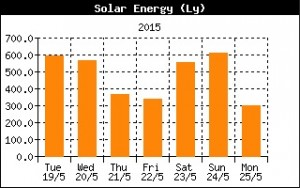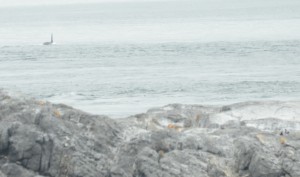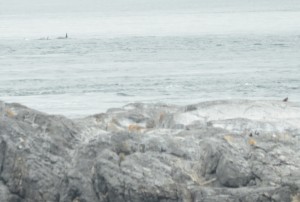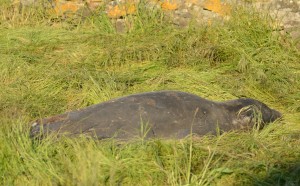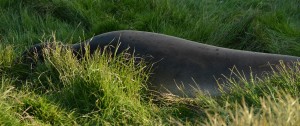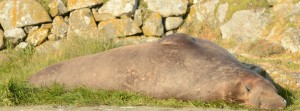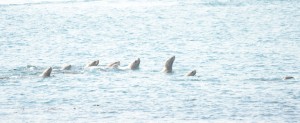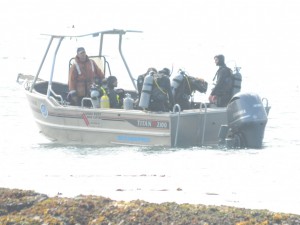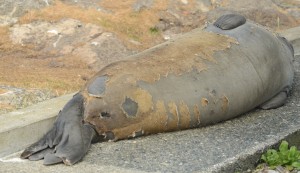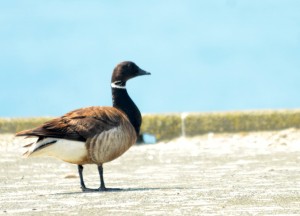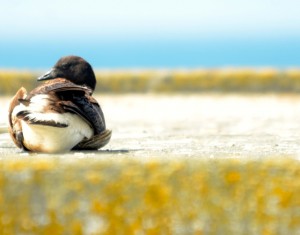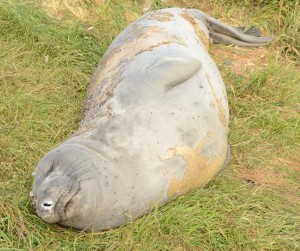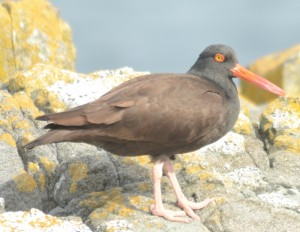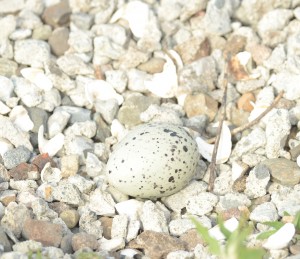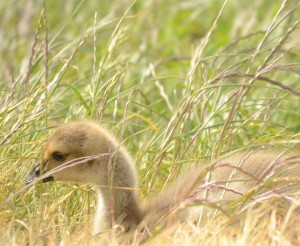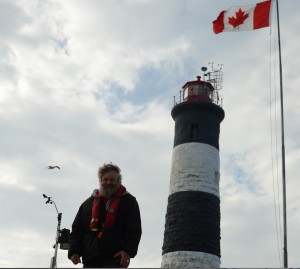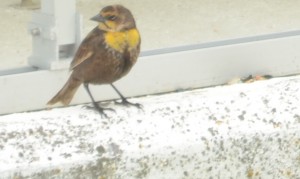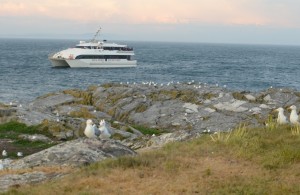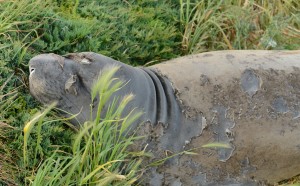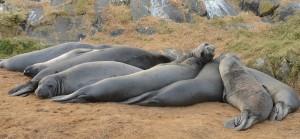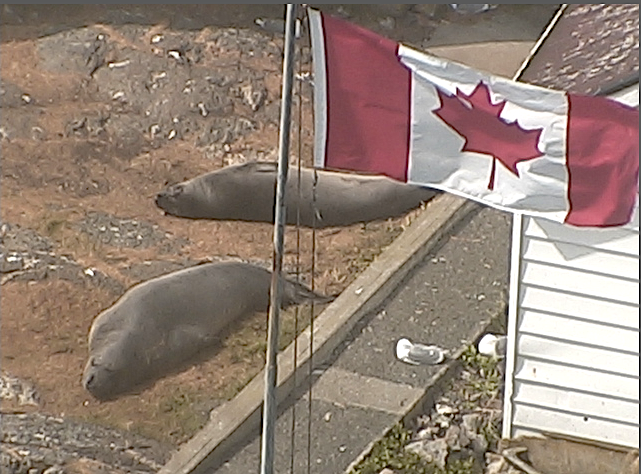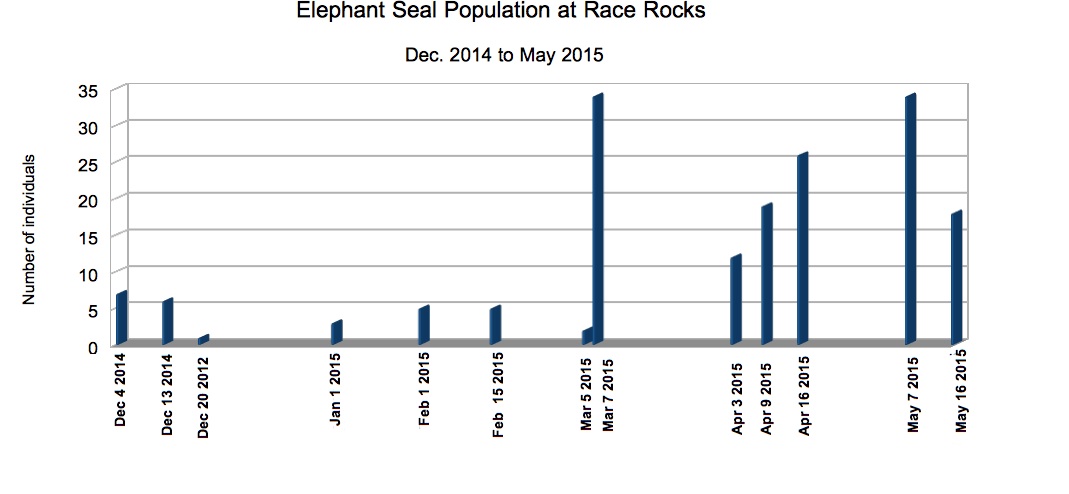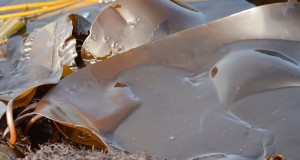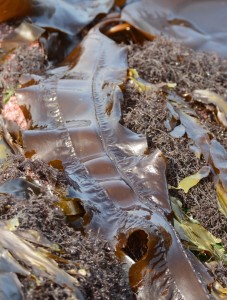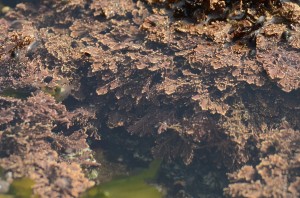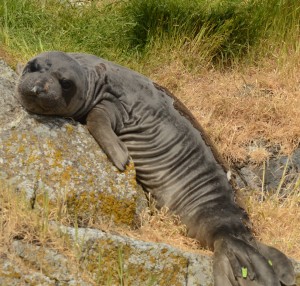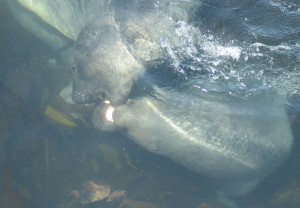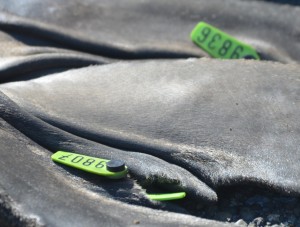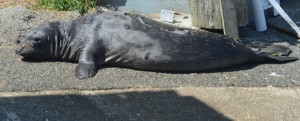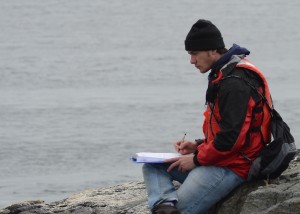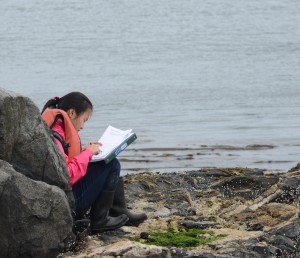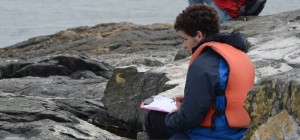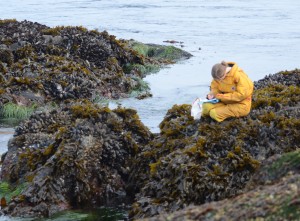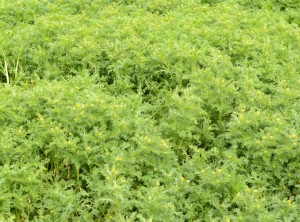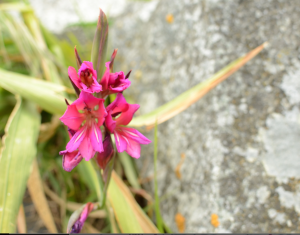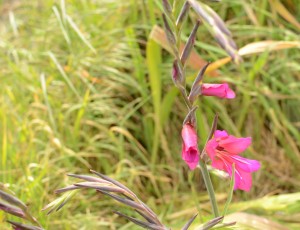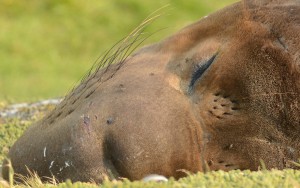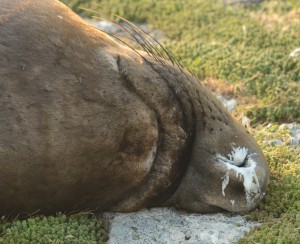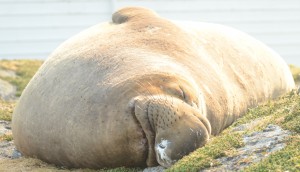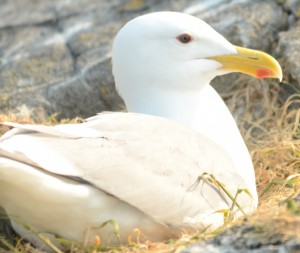It was another steady, west by southwest day, blowing 15 to 20 knots, from morning to night and clearing out the clouds for a glorious afternoon and evening. There was just enough marine haze on the horizon to make a great sunset. This morning barometer gradually rose to 1016 hPA and then started a slow decline after noon ending up at 1014hPA just before 8:00 PM. The forecast is calling for strong westerlies to continue with a mix of sun and cloud.
Only four whale watching boats were observed in the Ecological Reserve today and everyone was on their best behaviour.
Ecological happenings were subtle today. More sealions are hauling out on Great Race including a few very chunky Stellers bulls. The California Sealions seem to putting the call out for others within hearing range to come and bark in concert. There are more birds mating wherever you look, the Canada Geese goslings are growing incredibly fast and the bull kelp is now forming a broad canopy even on the high tide. The gull bolus contents are shifting to more ‘forage fish’ bone content from the earlier strong bias toward chiton plates and the adults are feeding each other in practice for parenthood?
The Bald Eagles continue to fly in and scare all the gulls, geese and oystercatchers and it looked like they caught something today, but I am not sure what..
Chris and Courtney brought Second Nature out in the afternoon with two visitors from Scotland, (an alumna and her husband), and the two relief eco-guardians Guy and Christine who will be here for the summer. Chris, Courtney and Guy delivered diesel for the generator, using the derrick, barrels, a drum dolly and a fair bit of sweat. It looked scary to me but they pulled it off with aplomb and Chris said it is easier, safer and less risky than the old method, so that is really great.
My chores today were routine. I am going to post this now and update it with photos later in case the Internet goes down again in between. Must run and shut down the generator.
